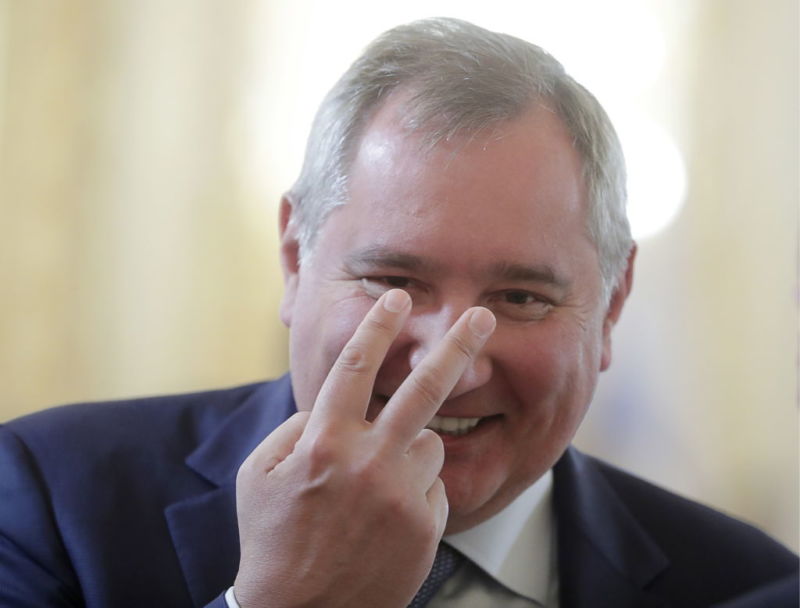
Mikhail Metzel/TASS via Getty Images
There’s a nasty, increasingly public battle that has engulfed a handful of former cosmonauts, a robot, and the current leader of Russia’s space program, Dmitry Rogozin, in controversy.
The genesis of the dispute seems to be that some former cosmonauts have begun to speak out against Rogozin’s leadership of Russia’s space efforts—which has at times seemed self-serving—amid the rise of competitors like SpaceX and the decline of the country’s aging infrastructure.
The most outspoken critic of Rogozin and Russia’s space program has been Maxim Suraev, a Russian fighter pilot who served six-month stints on the International Space Station in 2010 and 2014. After retiring from the cosmonaut corps, Suraev was elected to the State Duma, the lower house of the Russian assembly.
For reasons that are not entirely clear, Suraev’s criticism of the state of the Russian space program has escalated in recent weeks. For example, one week ago he tweeted an image comparing the interior of the Russian Soyuz vehicle with that of SpaceX’s Crew Dragon spacecraft, developed for NASA, with the caption, “Needless to say, you can see for yourself.”
Слов нет, всё видите сами. pic.twitter.com/EYjDTe5LeP
— Макс Сураев (@Msuraev) October 7, 2021
Suraev has also tweeted a short video clip of SpaceX founder Elon Musk saying, “The trampoline is working,” following the successful launch of the Demo-2 mission to the International Space Station in late May. This was a mocking reference to Rogozin’s insult, in 2014, of NASA after he was sanctioned by the Obama administration in the wake of the Crimea invasion. Rogozin said NASA could get to space on a trampoline if it didn’t want to work with the Russian space program.
In another notable swipe on Twitter, Suraev “apologized” to Soviet hero Yuri Gagarin, the first human to go into space, while sharing a short video of NASA testing the solid rocket booster for its Space Launch System rocket. The implication was that NASA’s space program is moving forward, while Roscosmos is stuck in the past.
Rogozin used to have a Twitter account—which was quite colorful and at times rather spiteful—but he deleted it earlier this year for reasons unknown. (It seems plausible that senior government officials told him to knock it off). However, after Suraev’s criticism, Rogozin may have been using the Twitter account of “Fedor,” a robot sent to the International Space Station in 2019, to respond.
This Twitter account was also deleted this weekend. But before the account was either deleted or banned from the social networking site, “Fedor” attacked Suraev and another astronaut he flew with, Alexander Samokutyayev, for being drunk on board the space station. (See screenshot of translated tweets). These tweets are consistent with the manner in which Rogozin used the social networking site.
Samokutyayev, also a member of the Duma since his retirement as a cosmonaut, hit back on Monday, saying he was “outraged” by the accusations and that he and Suraev would investigate their origins. Rogozin has denied having anything to do with the Fedor Twitter account, but he also said perhaps the robot was really tweeting on its own.
If all of this doesn’t make much sense, welcome to Russia’s space industry under the leadership of Rogozin. Independent Russian space analysts warn the program is slipping into the “Dark Ages” under mismanagement, and Rogozin has been accused of enriching himself at Roscosmos’ expense. The global space industry would be better off with a better-led Russian space program.